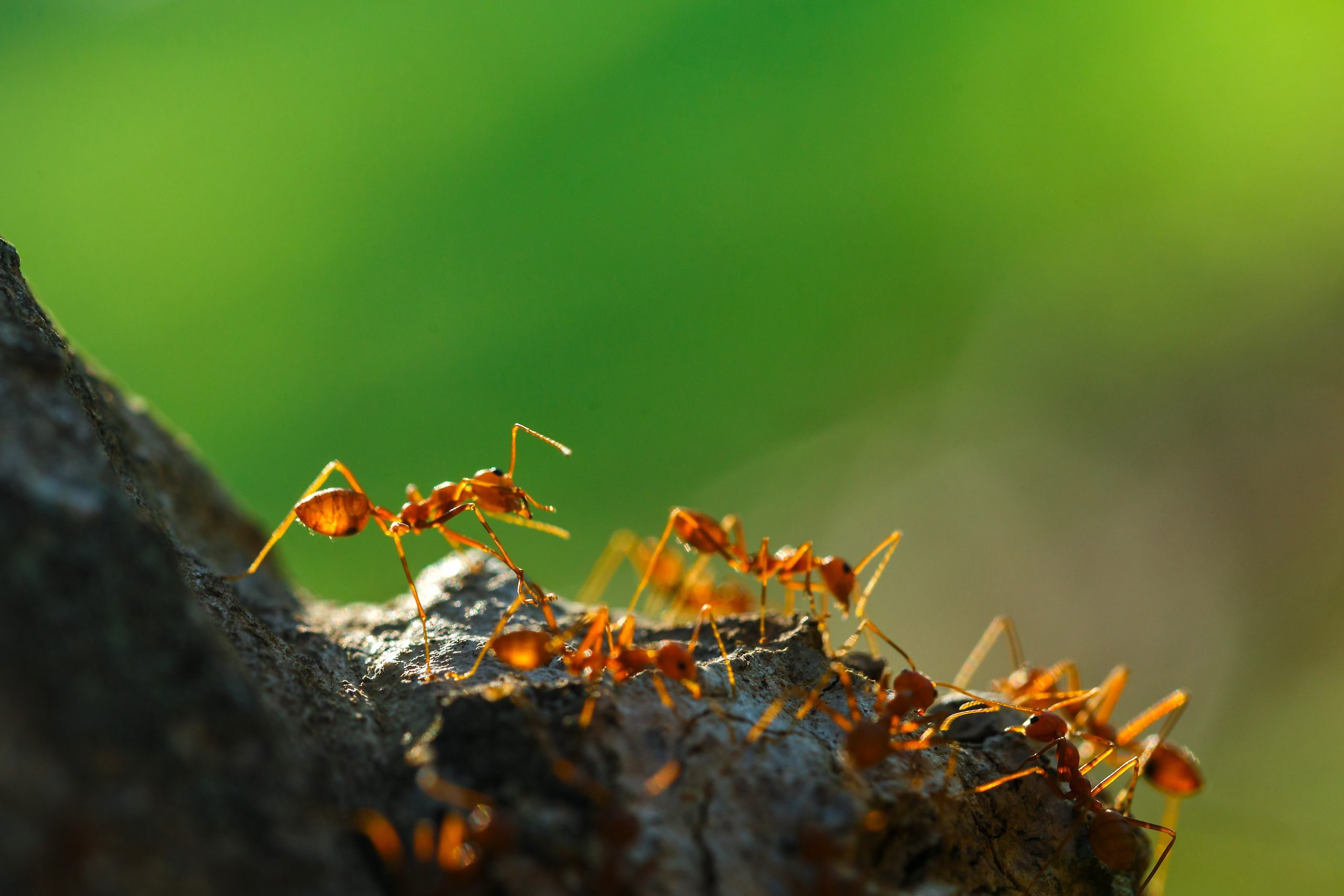Origin
Originally from South America, Little Fire Ant (Wasmania Auropunctata) is considered among the world’s worst invasive species.
An entire Little Fire Ant colony can fit in macadamia nut shell .
- Little Fire Ant don’t form mounds
- Nests don’t have distinct openings
- Nests in moist, shady areas, in trees, under tree bark, under rocks, within logs & in leaf litter

Little Fire Ant vs Tropical Fire Ants
Little Fire Ant are tiny ants, measuring 1/16th inch long, are pale orange in color and move slowly. Little Fire Ant move slowly, unlike the Tropical Fire Ant which is established in Hawaii, move quickly and are larger with a larger head in proportion to its body.

Little Fire Ants (LFA) are a new, invasive stinging ant that will spread across the Hawaiian islands if we don’t take action now.
Click to ReportPotential Threat
Little Fire Ant can produce painful stings and large red welts and may cause blindness in pets. They can build up very large colonies on the ground, in trees and other vegetation and completely overrun a property. They will also freely move into homes.
Little Fire Ant infest yards, houses, farms and forests. Their powerful stings harm people and wildlife. Little Fire Ant sting the eyes of pets, leading to blindness. Little Fire Ant damage crops, food production,
and the economy everywhere they have spread. Little Fire Ant alter (or impact) people’s lives because their stings are unavoidable.
Little Fire Ants (LFA) were introducted to Hawaii in the late 1990’s. The invasive stinging ant that has been spreading across the Hawaiian islands, we all need to take action now.
A multi-agency response has been launched to survey and treat potential Little Fire Ant locations. Contact the Department of Agricultre and Biosecurity for information on residenial treatment to help stop the spread and keep your family and pets safe.
Everyone needs to test their homes and yards and report possible Little Fire Ant. We need your kokua.

